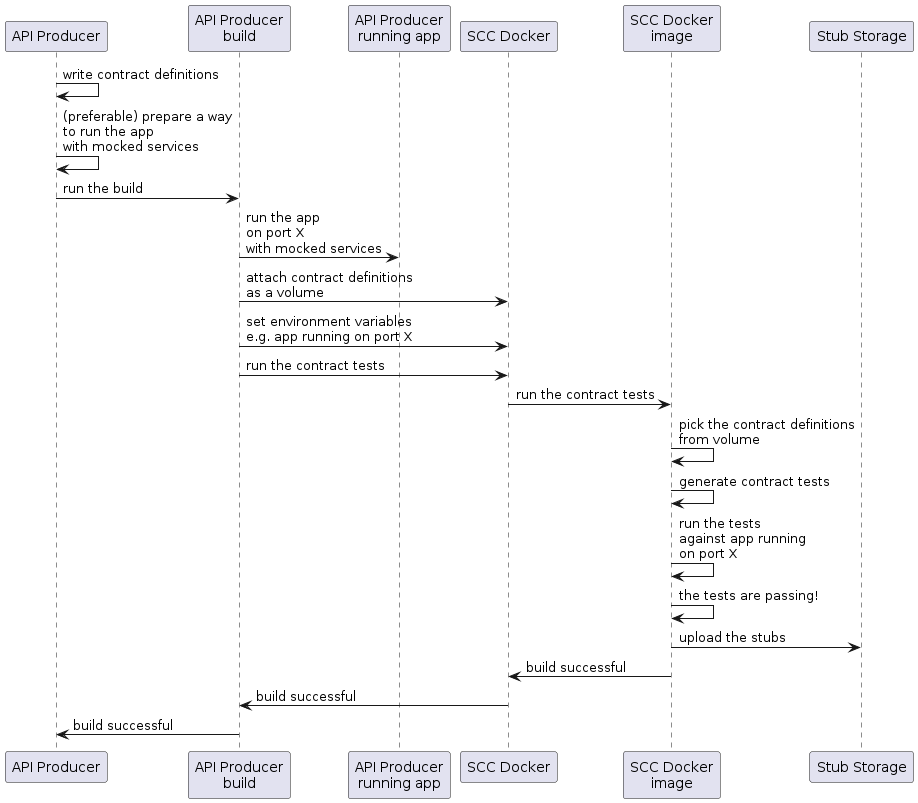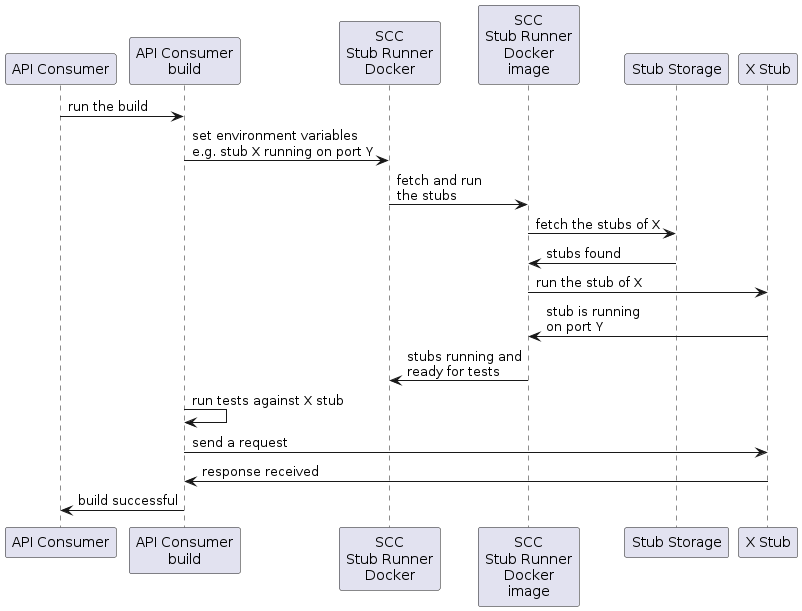|
This version is still in development and is not considered stable yet. For the latest stable version, please use spring-cloud-contract 4.3.0! |
Provider Contract Testing with Stubs in Artifactory in a Non-JVM World
In this flow, we assume that:
-
The API Producer and API Consumer are non-JVM applications.
-
The contract definitions are written in YAML.
-
The Stub Storage is Artifactory or Nexus.
-
Spring Cloud Contract Docker (SCC Docker) and Spring Cloud Contract Stub Runner Docker (SCC Stub Runner Docker) images are used.
You can read more about how to use Spring Cloud Contract with Docker here.
Here, you can read a blog post about how to use Spring Cloud Contract in a polyglot world.
Here, you can find a sample of a NodeJS application that uses Spring Cloud Contract both as a producer and a consumer.
Producer Flow
At a high level, the producer:
-
Writes contract definitions (for example, in YAML).
-
Sets up the build tool to:
-
Start the application with mocked services on a given port.
If mocking is not possible, you can set up the infrastructure and define tests in a stateful way.
-
Run the Spring Cloud Contract Docker image and pass the port of a running application as an environment variable. The SCC Docker image:
-
Generates the tests from the attached volume.
-
Runs the tests against the running application.
-
-
Upon test completion, stubs get uploaded to a stub storage site (such as Artifactory or Git).
The following UML diagram shows the producer flow:

Consumer Flow
At a high level, the consumer:
-
Sets up the build tool to:
-
Start the Spring Cloud Contract Stub Runner Docker image and start the stubs.
The environment variables configure:
-
The stubs to fetch.
-
The location of the repositories.
Note that:
-
To use the local storage, you can also attach it as a volume.
-
The ports at which the stubs are running need to be exposed.
-
-
Run the application tests against the running stubs.
The following UML diagram shows the consumer flow:


